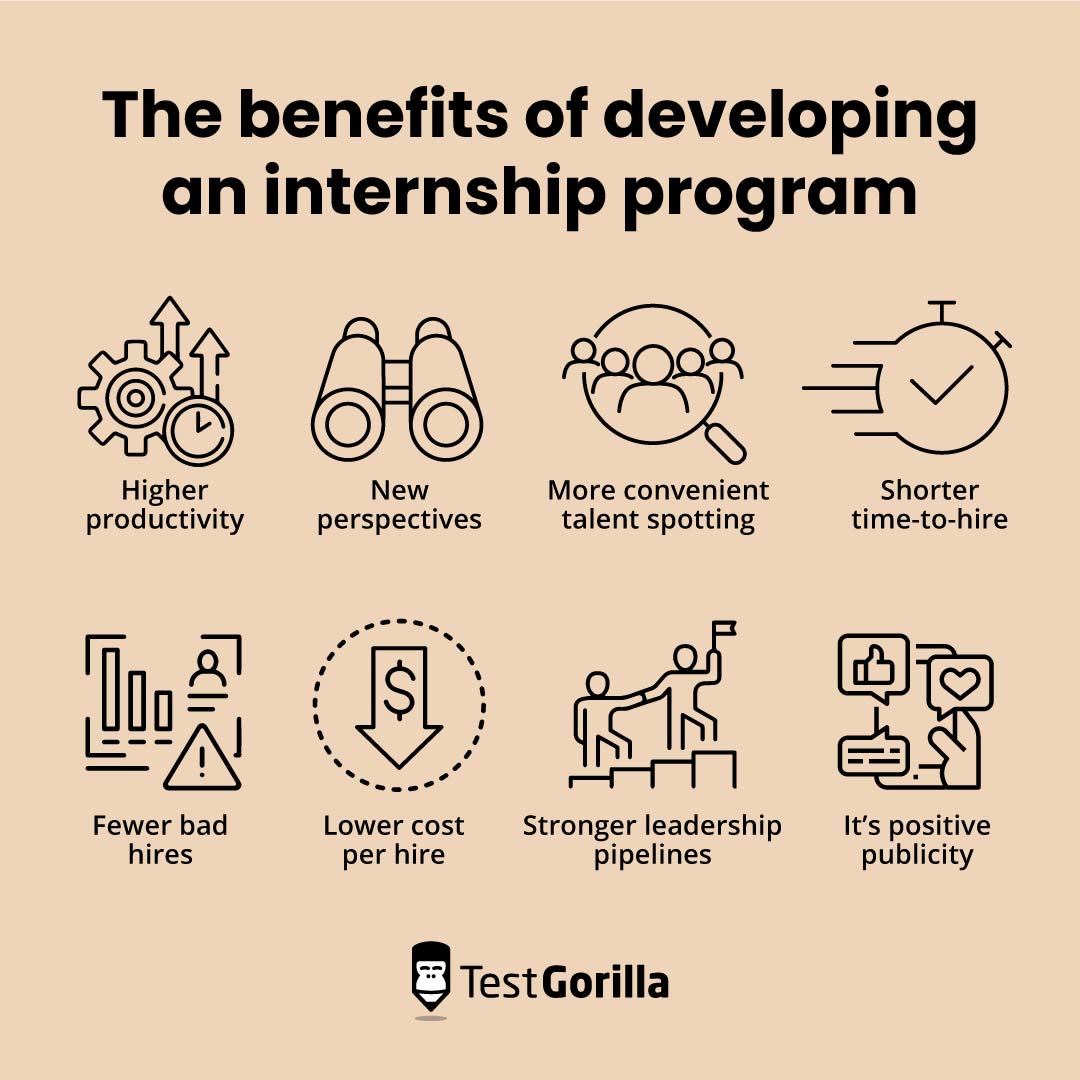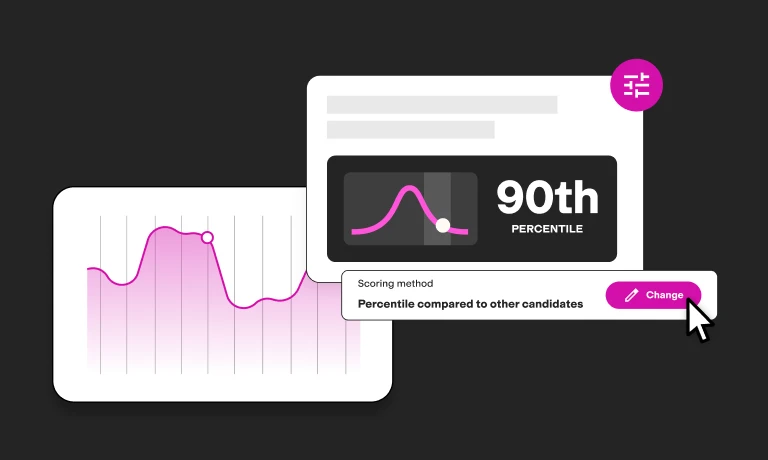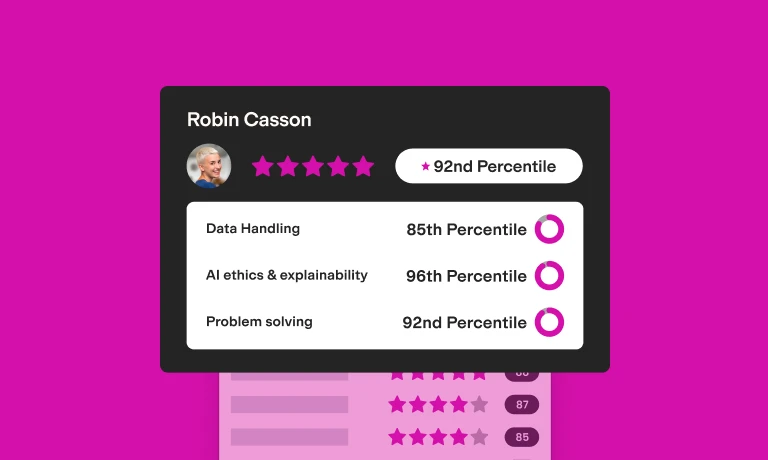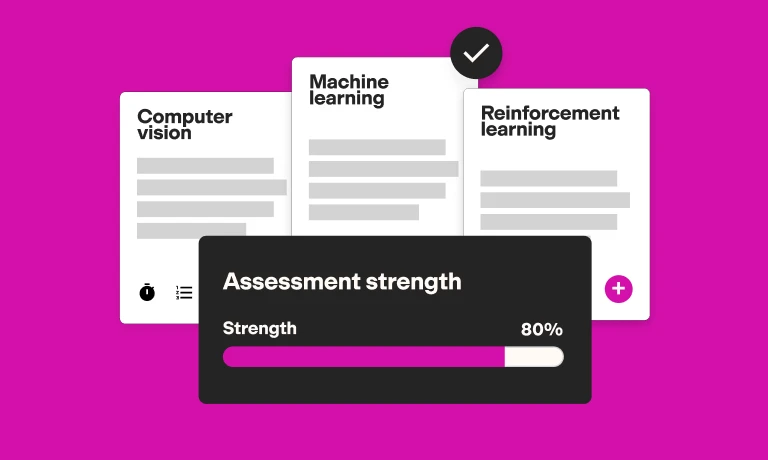Creating an internship program: How to leverage this talent acquisition strategy and attract passionate new recruits
Creating an internship program is a reliable way to bring talented, fired-up candidates into your company.
Internships help keep your talent pool full of eager graduates and entry-level professionals – who not only understand instructions but also get your brand – to fill roles and succeed staff across your talent map.
Although these programs can be extremely fruitful for your talent pipeline, a few common difficulties arise. These include questions such as:
How do you start setting up an in-house internship program?
Should you pay your interns?
Do you grade interns on skills, experience, or both?
What are the legal considerations?
This guide addresses these questions and shows you how to develop an internship program as part of your overall talent acquisition strategy. We also have some real-life success stories to share for inspiration.
So let’s get started and look at why internships are ideal candidate magnets (but feel free to jump ahead to the best practices if you’re short on time).
Table of contents
- What is an internship program?
- Why is creating an internship program important?
- The benefits of developing an internship program
- How to start an internship program to acquire top talent: 9 best practices
- 3 examples of companies succeeding with an internship program as a talent acquisition strategy
- Creating an internship program: Bring fresh talent to your door
What is an internship program?
An internship program is a temporary, entry-level employment structure typically aimed at graduates and people entering a profession for the first time. Some programs are unpaid, while others offer a salary.
Internship programs offer students and new professionals the chance to learn more about working in their desired industries.
Once considered a talent acquisition trend, internship programs are now a common recruiting strategy for employers across industries, company sizes, and countries.
Intern hiring doesn’t just get you cheap hires – internships also give enthusiastic, entry-level staff a shot at making a good impression on your company. Moreover, as their employer, you get hires who are likely to stick around after they graduate.
Should interns be paid?
Although work experience helps graduates explore employment for the first time, it's ethically reasonable to expect compensation and benefits if they support a company.
Despite this, it’s legal to run unpaid internships across the US. However, depending on how you use interns' skills, they could qualify as paid employees based on the FLSA (Fair Labor Standards Act).
In some cases, pay isn’t always demanded. For example, consider cases where colleges subsidize students or where interns work for non-profit organizations. Before deciding on compensation, be careful to check legal advice regarding employee classification, too.
We cover legal considerations further down in this guide.
Why is creating an internship program important?
Internships should offer mutual benefits for you, as the employer, and any staff coming on board.
We examine them below and explain why developing an internship program is important for everyone involved.
Importance for employers
A rolling internship program ensures succession plans and talent pipelines are always full and maintained.
Research claims more than half of all US businesses don’t have a succession plan in place at all.
Succession plans ensure talent is always onboard to replace staff when they leave. Without this strategic workforce planning, your HR department continues to run expensive and time-consuming recruitment campaigns to keep refilling roles.
Businesses repeatedly refill succession plans by hiring interns with the right skills, culture add, and development potential. One employee leaves, and another steps in.
Internships give businesses access to "hidden" or promising talent at the start of their careers. Because these programs don’t focus as much on experience and resume screening, employers connect with people genuinely passionate about developing in their industries.
Passion drives enthusiasm, care, and productivity – which is rare in the workplace, with just one in ten US workers reporting they are "passionate" about their work.[1]
Beyond this, internship programs are reliable automated recruitment marketing tools. An attractive program drives interest from hard-working graduates and new professionals who want to join companies that share their passions.
Studies claim that 67% of interns accept job offers. Interns frequently want to stay with companies they trial out for, which boosts HR’s bottom line and keeps talent pools healthy.
Importance for employees
Internship opportunities provide much more than simple academic credit for the employee.
Graduates and new professionals seek out internships because they offer easy access to various industries, providing a real-world taste of their future work environment. They can apply knowledge and skills in the workplace, benefiting from mentorships and development.
For many employees, internships help to kick-start careers. Records show graduate unemployment is between 3% and 4% nationwide, meaning millions of people continue to struggle for work despite studying hard and proving their aptitude.
Internships are important from a social perspective, too. Programs often help graduates and entry-level staff build professional connections and find networking opportunities.
Moreover, intern salaries aren’t necessarily as important as employers imagine. Despite the implications of an unpaid program, up to 85% of unpaid interns claim this arrangement is still beneficial due to the crucial experience and knowledge they gain.[2]
The best insights on HR and recruitment, delivered to your inbox.
Biweekly updates. No spam. Unsubscribe any time.
The benefits of developing an internship program
From an HR perspective, there are many benefits to creating an internship program, explaining why intern hiring projections for US businesses are leaping by more than 22%.
Here are the main benefits to consider before setting up internships:
Higher productivity
New perspectives
More convenient talent spotting
Shorter time-to-hire
Fewer bad hires
Lower cost per hire
Stronger leadership pipelines
It’s positive publicity
Higher productivity
Interns are eager to prove themselves in the workforce and give their all to take on work otherwise shared across existing staff. This helps employers delegate entry-level tasks so more established team members can focus on bigger demands.
New perspectives
New perspectives from fresh hires help companies gain insight into how their employer branding looks from the outside. Therefore, interns help businesses produce creative products and services, directly appealing to the mass market.
More convenient talent spotting
Internship hiring helps to keep an influx of new candidates flowing into a business each year. It removes the need to continually build hiring programs because the process becomes more autonomous.
Shorter time-to-hire
Internships boost internal hiring pools, enabling recruiters to fill roles from within. This process reduces the need to spend weeks recruiting externally. Statistics show it takes two to three months on average to recruit for roles through traditional methods.
Fewer bad hires
Relying on interns who develop in-house reduces the risk of a bad hire. Human resources and management already know who they’re working with and the skills they possess. This benefit helps explain why more than 50% of those working paid internships receive job offers.[3]
Lower cost per hire
Should you promote from within, internships help reduce your cost per hire metric.
Interns further reduce costs incurred through employee turnover – they are almost a third more likely to be retained than non-interns.[4]
Stronger leadership pipelines
Developing new leaders is the number one concern for chief executives in the US:
An internship program enables you to grow prospective leaders from within your organization. Once interns progress to the point of leadership training, they’re already ingrained in your company culture and values.
Coupled with the use of talent assessment tests in your leadership development programs, you can greatly reduce the need to find leaders externally.
Positive publicity
Companies that offer internships to young people and entry-level professionals appear supportive, forward-thinking, and people-focused. This benefit increases further if you pay your interns, too. It’s a reliable way for businesses to create positive, evergreen public images.
How to start an internship program to acquire top talent: 9 best practices
The benefits of hiring talent through internships are clear.
Now, let's focus on nine ways you can start building an internship program to boost your talent pool.
Best practices for an effective internship program
Best practice | How and why it’s important |
1. Create a specific intern job description | Be clear and explicit on what interns should expect and attract discerning, high-quality talent |
2. Build and define candidate profiles with skills testing | Hire for aptitude and attract interns by showing skills are more important than experience |
3. Find the best interns with talent assessments | Judge interns based on power skills and how they adapt to challenges without the need for experience |
4. Recruit hires on-campus | Partner with colleges to promote your program and assure eager interns you have roles for them after graduation |
5. Research legal requirements | Ensure you have the legal right to build a paid or unpaid internship and that hires receive fair treatment and benefits |
6. Align internship hiring with your culture and values | Create an honest profile of what it’s like to work for you and encourage word-of-mouth hiring and promotion |
7. Create mentorships for each intern | Ensure interns have someone to work with when joining to ease them into your business |
8. Give interns opportunities to learn | Provide development opportunities to help interns learn more about your industry and become more employable |
9. Conduct exit interviews | Ask for feedback on the internship experience and adjust your scheme |
1. Create a specific intern job description
Start by creating a job description specific to your internship positions; don't purely advertise for existing roles. All candidates look for clarity in job descriptions, especially regarding duties, salaries, and other benefits.
Show interns non-traditional benefits associated with joining your internship program.
Ask yourself the following:
Do you offer employee wellness programs?
What learning opportunities are there?
What support could an intern expect when starting with you?
Be explicit on who interns report to, their effect on the chain of command and product, and what to expect from each stage of the program.
Being explicit and honest ensures you attract candidates who know what they want to get into and are discerning about who they apply with.
For example, what skills do interns learn in their program with you? Who supports them, and is there a post-internship program to join if offered a job?
2. Build and define candidate profiles with skills testing
To help create the perfect internship job description, work on building your ideal candidate profile (ICP) as a priority.
ICPs show internship candidates what you’re looking for from an applicant’s personality and attitude. These profiles don’t typically account for experience or resumes, so base your ICP and goals for each intern hire around skills-based hiring principles.
Be clear to candidates that this is how you define the perfect interns for the program. Make it obvious that you test applicants based on skills and attitude rather than years of experience.
At this time of many interns’ lives, they’re keen to work with a company that doesn’t overlook them because of a lack of experience. The added effect here is more inclusive hiring and a broader talent pool.
Your goal for hiring interns should be to ensure you provide opportunities that align with their career and industry aspirations and meet your hiring plan and cost targets.
3. Find the best interns with talent assessments
Hiring interns via skills assessments ensures you always have access to the best possible new talent.
You give graduates and entry-level employees a chance to shine without needing experience in the industry.
Skills testing helps to remove potential time-wasters from the talent pool. You don't need to make broad guesses based on resume recruiting standards.
Although skills testing should already be one of your priorities, it is particularly helpful when hiring interns. Interns typically don't have references or tangible experience for you to "bet on" when hiring.
With talent assessments, you see how a graduate or entry-level hire performs under specific pressures and challenges.
Testing helps strengthen your talent acquisition analytics and the organization of potential hires based on specific traits and scores. There's less need for you to rank potential interns based on gut instinct or face value.
For example, use skills testing, such as personality tests and assessments for power skills, to ensure you hire the best culture adds.
4. Recruit hires on-campus
Don’t expect college hires to come to you – go to them.
Campus recruitment programs partner with businesses that support students and graduates.
It's a viable way to promote the benefits of your internship program, meet prospects, and build relationships with schools.
Building school relationships provides a direct intern pipeline into your business. In return, schools assure college students they have opportunities waiting for them during summers and when they graduate.
5. Research legal requirements
Always consult the law first when considering whether or not to pay interns you hire.
For example, although unpaid internships are technically legal in the US, you must ensure your setup passes a seven-point test established in federal law. Ultimately, your program should benefit your intern more than you, the employer.
Consider, too, the hours you expect your intern to work – it's generally agreed upon that students shouldn't work more than 20 hours per week during school time and 40 during summer vacation.
Showing you understand intern rights and that you're aware of the law assures people that you're working above board and care about your candidates.
6. Align internship hiring with your culture and values
Follow through on your promises of a good company culture and make sure these align with your company values and ethics.
For example, show interns you value employee skills and attitudes by sewing testing directly into the intern application process and throughout your program.
Aligning your internship hiring plan with values and culture helps make your employer branding more attractive to future hires. Applicants of all backgrounds value honesty and integrity highly.
You could further boost this effect by using an employee referral program through the power of positive feedback gained.
7. Create mentorships for each intern
Assign specific, dedicated mentors to each intern you hire from among your full-time employees. These could be middle-management workers or a direct supervisor.
Mentorships are a mutually beneficial learning experience for interns and current staff members. For example, you could open up mentorship opportunities for employees developing leadership skills.
Don’t just assign anyone as a mentor. Consider the qualities of a good mentor and run personality tests, such as DISC and Enneagram, before picking a suitable employee.
Applicants could find internship programs scary, especially if the job demands lots of different responsibilities.
Therefore, creating mentorship and shadowing opportunities lets interns know they have someone to work with while they find their way around your firm.
These mentors can give you a more detailed review of the intern’s progress and also help their mentee set goals to facilitate their professional development.
8. Give interns opportunities to learn
Interns, by and large, want to learn and develop. Developing new skills and building on others helps to boost their employability and ensure they know what the broader industry expects of them.
Lead with a culture of learning and development that’s obvious through your recruitment marketing.
Help your internship candidates become agile learners by using skills tests and assessments to build an employee development plan after they join you. Encourage them to set learning objectives to achieve during their time with you.
Rank intern scoring in various skills, such as time management, to align the best candidates for a full-time position and potential promotion into full-time positions and specific programs. Be clear with intern hires that you offer such opportunities but set reasonable expectations.
9. Conduct exit interviews
Always conduct exit interviews for feedback at the end of the internship.
Exit interview questions don't just provide closure to employees; they also offer insights into how effective training standards are, what works well within the culture, and what needs improvement.
You could gain insight into flexibility in the workplace and how the candidate experience works for interns as a whole.
The answers you receive help to shape your intern programs for years ahead. The best insight you get into your internships comes from the interns themselves.
Remember to interview before and after the internship, regardless of whether you keep people on board.
3 examples of companies succeeding with an internship program as a talent acquisition strategy
Now that you know the theory behind setting up an internship program, let's look at three companies that successfully put these acquisition practices to work.
Successful internship programs to inspire you
Company | What it offers |
Under Armour | Intensive learning and development Varied work opportunities Mentorships School flexibility |
Groupon | Personal project development Networking Mentorships Managerial guidance Learning opportunities |
Veeam | Networking Power skill training Vacation schemes Separate graduate programs Transferable skills development |
Under Armour
Under Armour, a fitness clothing brand, leads with a culture of learning and development through its internship program. The company provides design, corporate, digital, distribution, and retail opportunities.
Applicants get a crash course in the brand through an intensive three-day culture program, which gives interns a glimpse into how the chain of operation works behind the scenes.
The brand offers student workers a 10-12 week-long summer experience, complete with mentorships and access to executive leaders through interactive Q&A sessions.
What’s more, the company also breaks down barriers through its "Work While In School" initiative – which is based on part-time opportunities for students who need to work to put themselves through university.5]
This not only helps attract more diverse candidates from a wider range of backgrounds but also acts as a way to reinforce Under Armor’s inclusive values and prove them to prospective employees.
Groupon
Groupon, a voucher provider, prides itself on a close-knit internship program. Here, students and applicants work on their own projects while learning from mentors and important people in the company network.
The business prioritizes being supportive yet freeing by encouraging interns to "do their own thing" – this means giving interns and graduates their own projects to “own”, with plenty of opportunities for interns to check in regularly with mentors and managers.[6]
Groupon then uses case studies and testimonials from real interns to help add human faces to its promises of an empowering, caring, flexible working environment – which helps the company attract the next generation of interns to its program.
Veeam
Veaam, a data protection expert, offers interns dedicated training in power skills, networking opportunities, and sales practice.
What sets this firm apart slightly from other internships is a connected graduate program, which ensures opportunities for those at various levels of study and experience.
The brand promises opportunities to translate education into transferable work skills with a leading industry player. It leans heavily into inclusivity and supports remote employees, suggesting it's always ready to be flexible for its people – a value that’s highly attractive to Gen Z students and workers.[7]
The intern programs typically take place over summer vacation, meaning students can easily attend outside of school hours.
Creating an internship program: Bring fresh talent to your door
Interns – whether technical staff or HR interns – are enthusiastic, driven new professionals who genuinely want to make a difference in your industry.
For companies readjusting recruitment planning, creating an internship program is a lucrative talent acquisition strategy.
With a well-structured and appealing internship program, you get:
A talent pool full of engaged candidates
A regular source of new hires each graduation season
Reductions in hiring costs and time-to-hire
Insights and experiences from fresh faces in the industry
With talent assessments at your core, hiring the most promising intern prospects gets even easier.
If you’re adjusting your hiring system for the season ahead, consider brushing up on social media recruiting strategies and using AI in talent acquisition.
If you're new to skills testing and recruitment, head over to the TestGorilla library for inspiration.
Sources
Hagel III, John, et al. “Passion at Work”. Deloitte. Retrieved August 29, 2023. https://www.deloitte.com/global/en/our-thinking/insights/topics/talent/worker-passion-employee-behavior.html
Crain, Andrew. (November 1, 2016). “Exploring the Implications of Unpaid Internships”. NACE. Retrieved August 29, 2023. https://www.naceweb.org/job-market/internships/exploring-the-implications-of-unpaid-internships/
“2019 Student Survey Report – 4 Year”. (October, 2019). NACE. Retrieved August 29, 2023. https://www.naceweb.org/store/2019/2019-nace-student-survey-report-four-year-schools/
Gray, Kevin. (June 9, 2021). “Trends in One-Year, Five-Year Intern Retention Rates”. NACE. Retrieved August 29, 2023. https://www.naceweb.org/talent-acquisition/trends-and-predictions/trends-in-one-year-five-year-intern-retention-rates/
“Step Up (Careers)”. Under Armour. Retrieved August 29, 2023. https://careers.underarmour.com/content/Students/?locale=en_US
“Students & Grads”. Groupon. Retrieved August 29, 2023. https://www.grouponcareers.com/en/students-grads/
“Graduates and Interns – Launch your Career at Veeam!”. Veeam. Retrieved August 29, 2023. https://careers.veeam.com/students-and-graduates
You've scrolled this far
Why not try TestGorilla for free, and see what happens when you put skills first.
















